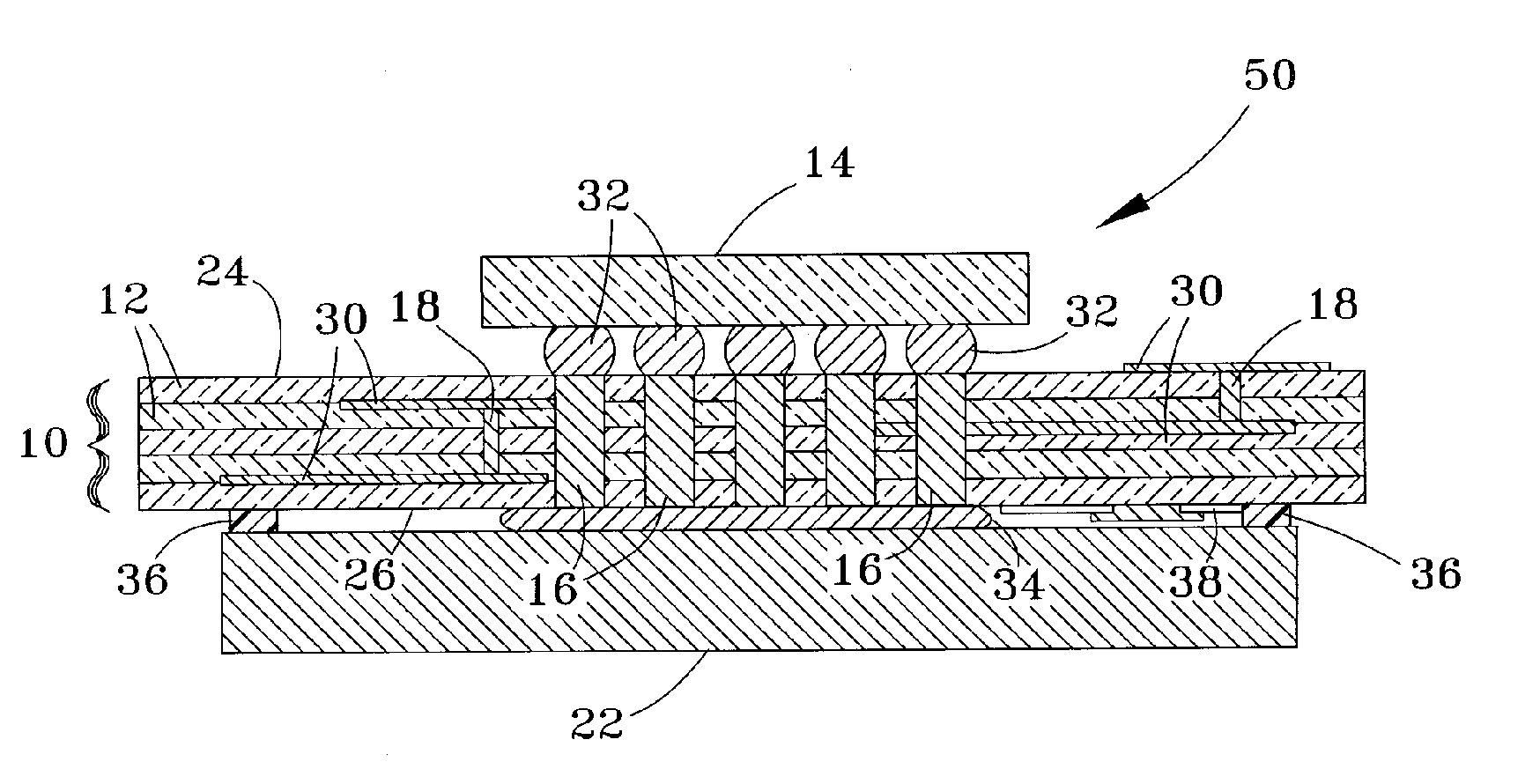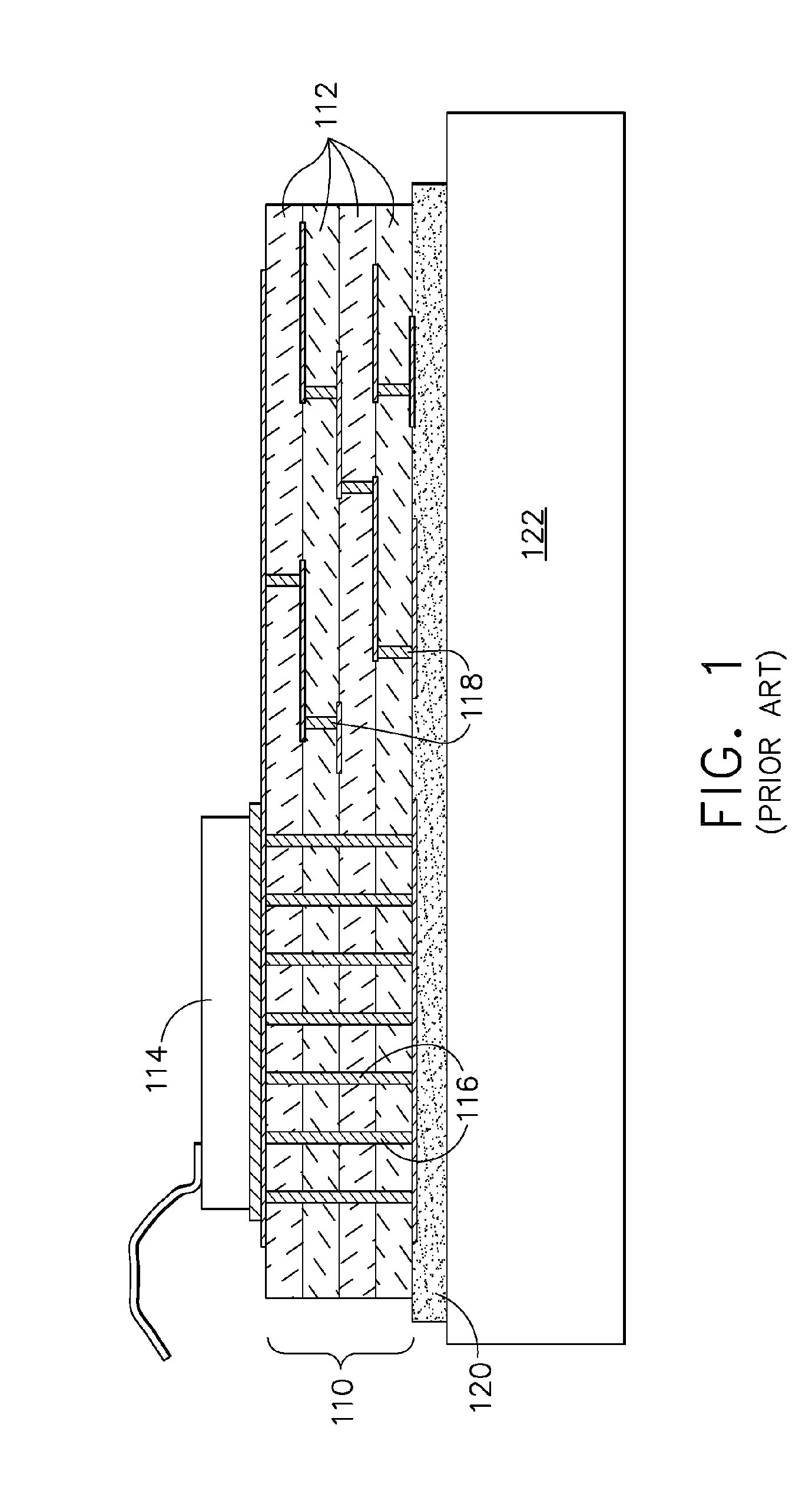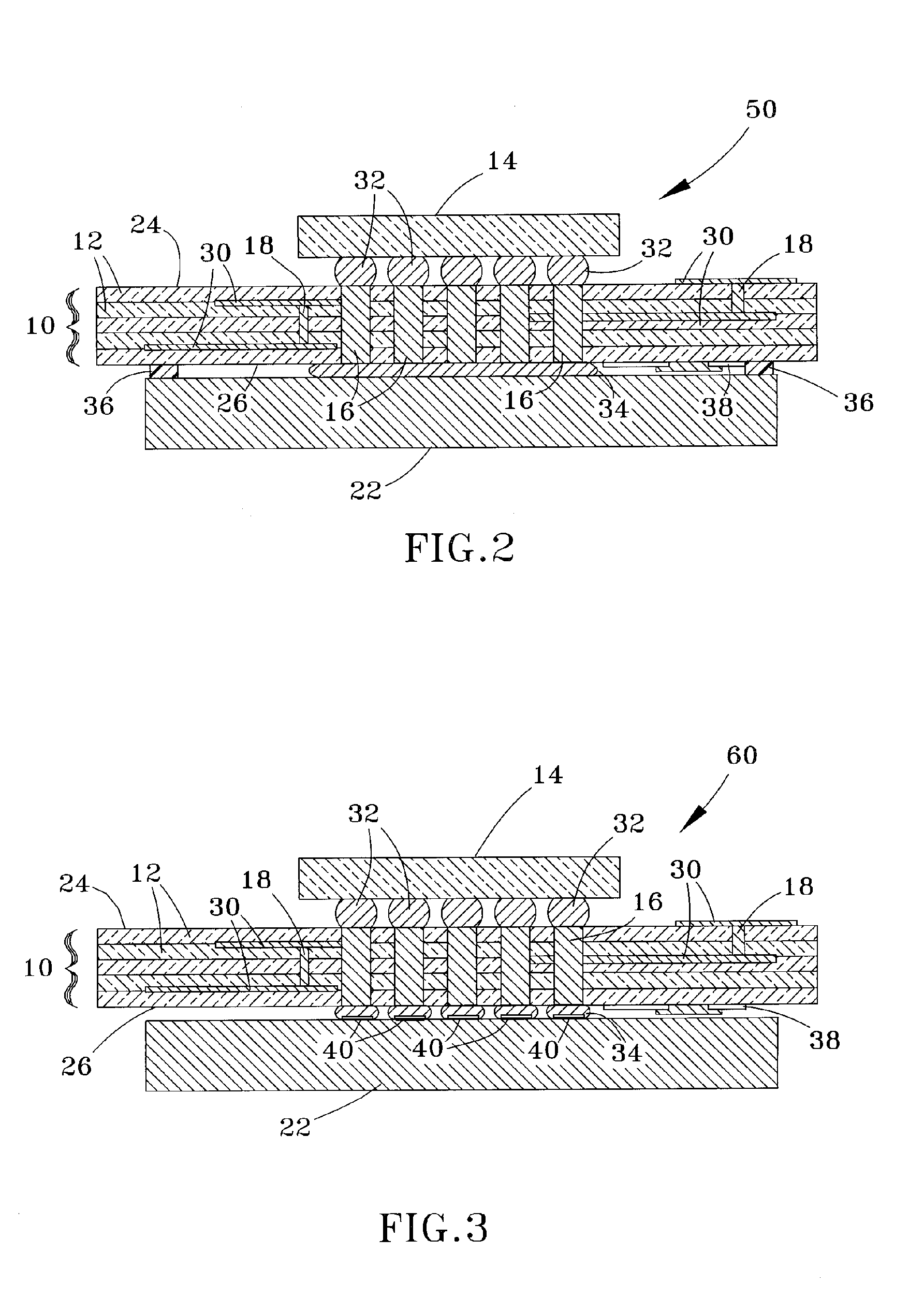Thermal management of surface-mount circuit devices on laminate ceramic substrate
a technology of laminate ceramic and circuit devices, which is applied in the direction of printed circuit aspects, electrical apparatus construction details, lighting and heating apparatus, etc., can solve the problems that the thermal management of power circuit devices cannot be improved by the use of metal-containing ceramic layers, and the ltcc substrate is also electrically conductive, etc., to achieve the effect of improving the thermal management of power circuit devices mounted
- Summary
- Abstract
- Description
- Claims
- Application Information
AI Technical Summary
Benefits of technology
Problems solved by technology
Method used
Image
Examples
second embodiment
[0020]FIG. 3 depicts a circuit board assembly 60 in accordance with the invention in which, for convenience, corresponding components are identified with the same reference numbers as those used in FIG. 2. As such, a power flip chip 14 is mounted on an LTCC substrate 10 made up of multiple ceramic layers 12. The embodiment of FIG. 3 differs in one aspect from FIG. 2 by the substitution of a nonmetallic (nonelectrically-conductive) heat sink 22 in FIG. 3 for the metallic (electrically-conductive) heat sink 22 of FIG. 2. Another difference apparent from FIG. 3 is the use of multiple solder bumps 34 in FIG. 3 instead of the single solder layer 34 of FIG. 2 to bond the heat sink 22 to the substrate 10. As with the embodiment of FIG. 2, the solder material for the solder bumps 34 is preferably a lower-melting material composition than the solder material used to form the solder bumps 32, so that reflowing the solder bumps 34 to attach the heat sink 22 does not result in reflowing of the ...
third embodiment
[0022] Finally, FIG. 4 depicts a circuit board assembly 70 in accordance with the invention in which, again for convenience, corresponding components are identified with the same reference numbers as those used in FIG. 2. As such, the assembly 70 includes an LTCC substrate 10 made up of multiple ceramic layers 12, a power flip chip 14 on one surface 24 of the substrate 10, and a heat sink 22 attached to the opposite surface 26 of the substrate 10. As in FIG. 2, the heat sink 22 is formed of an electrically-conductive material, such as aluminum. The embodiment of FIG. 4 differs in several aspects from the embodiment of FIG. 2. For example, the thermal vias 16 for the flip-chip 14 are physically and thermally coupled to the heat sink 22 with a three-layer system comprising a thick-film conductor layer 42, a single solder layer 34, and a single bond pad 40. The conductor layer 42 serves to spread heat and provide a solderable surface, while the bond pad 40 serves to provide a solderabl...
PUM
 Login to View More
Login to View More Abstract
Description
Claims
Application Information
 Login to View More
Login to View More - R&D
- Intellectual Property
- Life Sciences
- Materials
- Tech Scout
- Unparalleled Data Quality
- Higher Quality Content
- 60% Fewer Hallucinations
Browse by: Latest US Patents, China's latest patents, Technical Efficacy Thesaurus, Application Domain, Technology Topic, Popular Technical Reports.
© 2025 PatSnap. All rights reserved.Legal|Privacy policy|Modern Slavery Act Transparency Statement|Sitemap|About US| Contact US: help@patsnap.com



